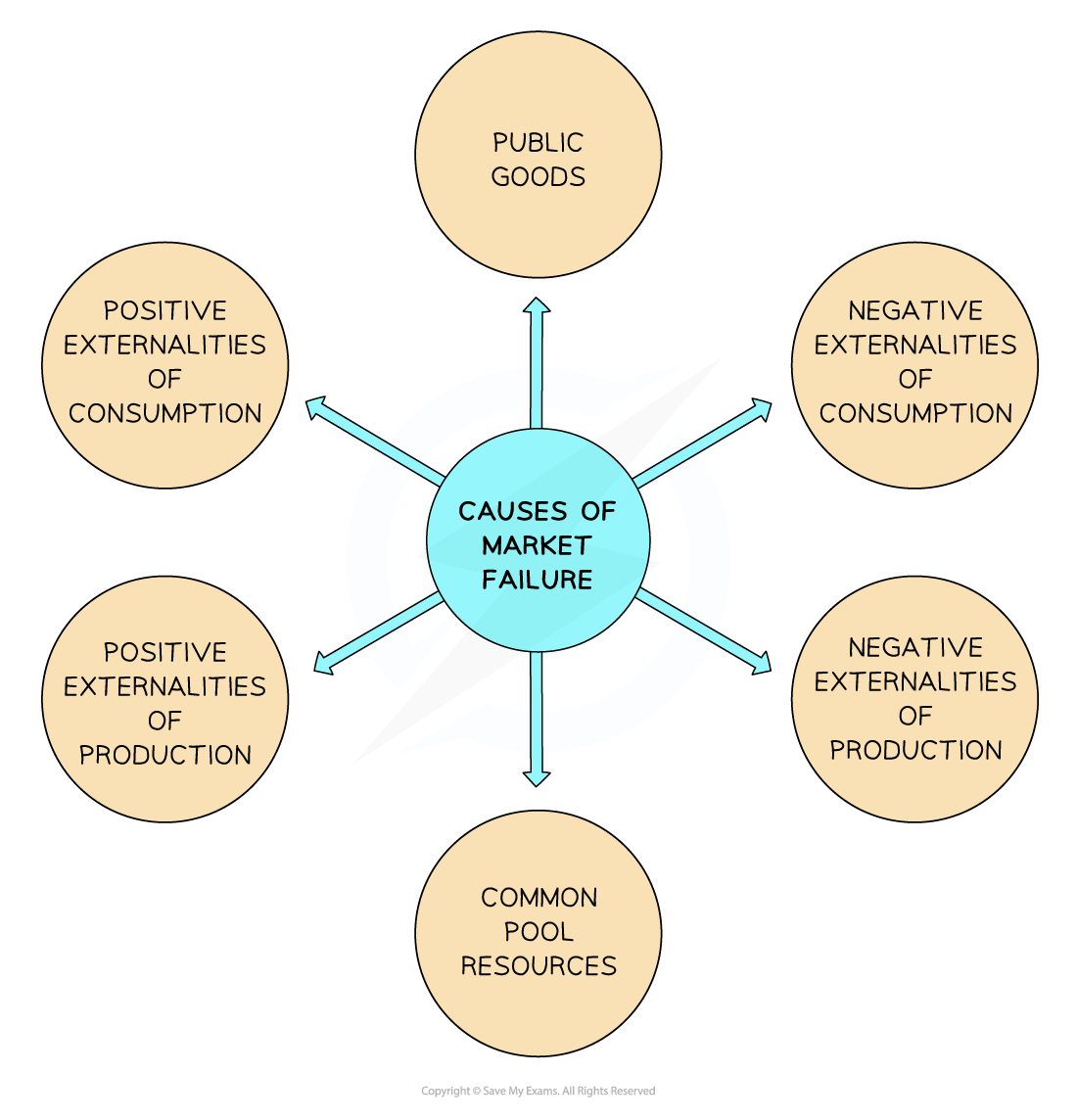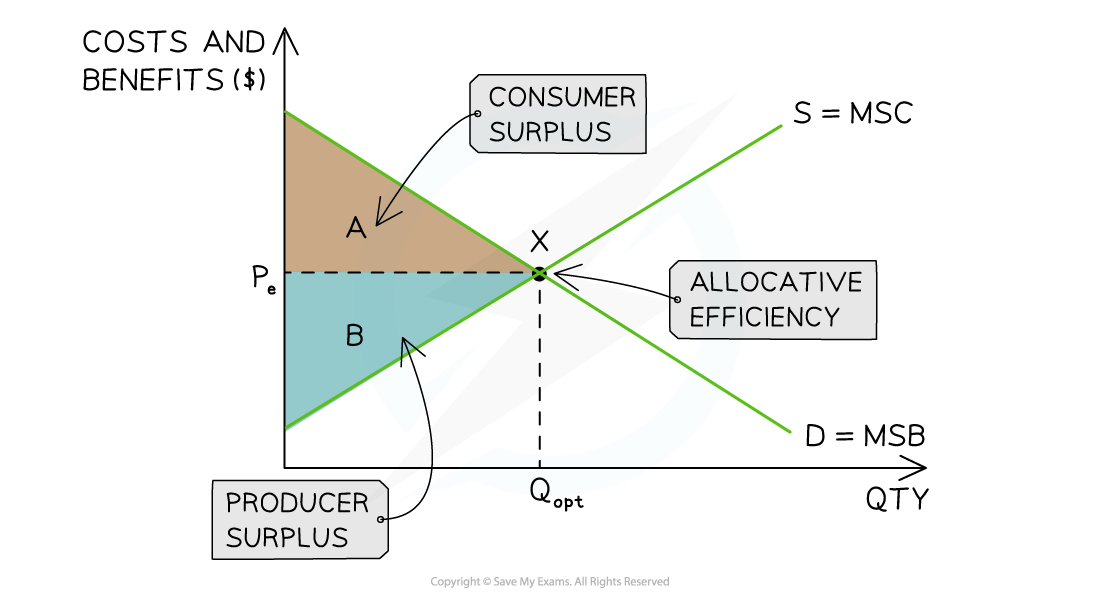Understanding Market Failure
- In a free market, the price mechanism determines the most efficient allocation of scarce resources in response to the competing wants and needs in the marketplace
- Scarce resources are the factors of production (land, labour, capital, enterprise)
- Scarce resources are the factors of production (land, labour, capital, enterprise)
- Free markets often work very well
- Sometimes they do not and there is then a less-than-optimum allocation of resources, from the point of view of society. This is called Market Failure

The causes of market failure which lead to a loss of allocative efficiency
- Externalities occur when there is an external impact on a third party not involved in the economic transaction between the buyer and seller e.g. passive smoking is considered to be a negative externality
- These impacts can be positive or negative and are often referred to as spillover effects
- These impacts can be on the production side of the market (producer supply) or on the consumption side of the market (consumer demand)
- Public goods are beneficial to society but would be under-provided by a free market e.g. flood defences
- There is little opportunity for sellers to make profits from providing these goods/services as they are non-excludable and non-rivalrous in consumption
- There is little opportunity for sellers to make profits from providing these goods/services as they are non-excludable and non-rivalrous in consumption
- Common pool resources are resources with no private ownership, they are collectively shared and are finite (used up) in consumption e.g. fishing grounds off the coast of Maine
- These resources are non-excludable
- They are rivalrous (limited in supply)
- From society’s point of view, in each of these cases, there is a lack of efficiency in the allocation of resources
- Sometimes there is an over-provision of goods/services which are harmful (demerit goods) and therefore an over-allocation of the resources (factors of production) used to make these goods/services e.g. cigarettes
- Sometimes there is an under-provision of the goods/services which are beneficial (public goods and merit goods) and therefore an under-allocation of the resources (factors of production) used to make these goods/services e.g. schools
- In the case of common pool resources there is an overuse of a finite resource
- Market failure occurs when there is a lack of allocative efficiency from the point of view of society
Socially Optimum Output & Allocative Efficiency
Key terminology used to explain market failure diagrams
- Marginal private benefit (MPB)
The additional benefit received from the consumption or production (output) of one additional unit of output - Marginal private cost (MPC)
The additional cost incurred through the consumption or production (output) of one additional unit of output - Marginal social benefit (MSB)
The benefit to society received from the consumption or production (output) of one additional unit of output. It is the sum of the private benefits plus the external benefits - Marginal social cost (MSC)
The cost to society incurred through the consumption or production of one additional unit of output. It is the sum of the private costs plus the external costs
Socially optimum output
- The socially optimum output occurs at the level of output where the marginal social benefit (MSB) = marginal social cost (MSC)
- This level of output considers where the market should be, if the market failures were accounted for
- This level of output is desired as there is no market failure
Allocative efficiency from society's point of view

At the point of allocative efficiency, community surplus is maximised
Diagram Analysis
- The Y-axis is labelled costs/benefits (instead of price)
- The supply curve is labelled S=MSC as it represents the social cost
- The demand curve is labelled D=MSB as it represents the social benefit
- The socially optimum level of output is at Qopt - the point at which all external costs or benefits are accounted for
- There is allocative efficiency at Qopt as this is where the community surplus (consumer + producer surplus) is maximised
Exam Tip
When we consider market failure, our analysis focuses on the level of output and the resources used to generate that level of output. It is less about the price of the product (high or low): although manipulating the price (e.g. taxes, subsidies) is one way of addressing the under-allocation or over-allocation of resources.